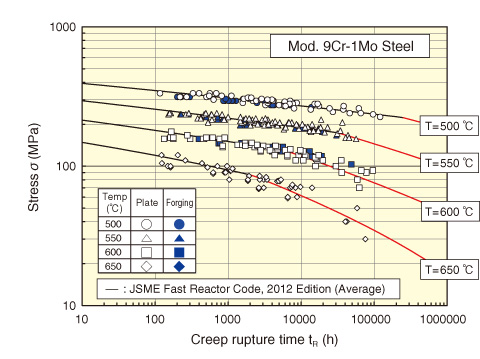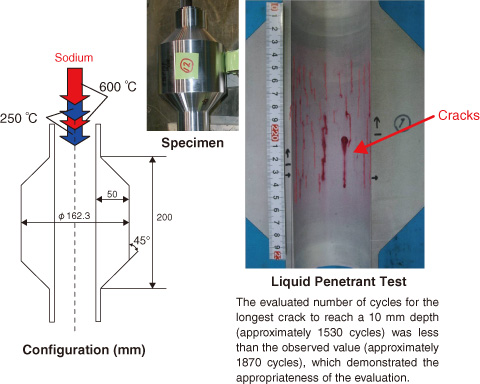
Fig.2-9 Creep rupture time of Mod. 9Cr-1Mo steel

Fig.2-10 Example of structural test of Mod. 9Cr-1Mo steel using sodium
Future fast reactors need to be more reliable, and their design has to be more flexible. The development of structural materials is one of the keys to achieving this goal, and extensive research and development have been conducted. For the Japanese demonstration fast reactor, which is in the design study phase, structural materials have been selected that are most suitable for meeting the requirements for components, such as higher strength at elevated temperatures or lower thermal expansion rates; 316FR steel was selected for the reactor vessels and internals, and Modified 9Cr-1Mo (Mod.9Cr-1Mo) steel was chosen for most parts of the coolant system, including the primary piping system. The 316FR steel was developed in Japan by the Japan Atomic Energy Agency and partners for fast reactor use. Mod.9Cr-1Mo steel was originally developed by the Oak Ridge National Laboratory in the United States, and extensive R&D programs were conducted in Japan in order to apply it to fast reactors.
The temperature during steady-state operation of the demonstration fast reactor will be approximately 550 °C, and a design life of 60 years is planned. To establish methodologies to achieve these goals, material data were obtained and evaluated under various conditions such as creep, in which tensile stress is continuously applied at elevated temperatures; fatigue, in which thermal stresses are repeatedly imposed; and creep-fatigue, in which creep and fatigue loadings are superimposed. For example, long-term creep tests, in which a heated specimen fails by tensile stress imposed by a dead weight, were conducted; the maximum rupture time so far obtained exceeds 100000 h (11.4 years). A database has been established, and the data were analyzed from mechanical and metallurgical viewpoints to formulate the properties. In the formulation, the focus for 316FR steel was on taking advantage of its superior properties under fast reactor conditions, and for Mod.9Cr-1Mo steel, it was on representing the creep properties, which vary depending on the stress levels (Fig.2-9). The creep strength of 316FR steel at 300000 h and 550 °C, evaluated using the formulated properties, was 1.7 times higher than that of the conventional material SUS304, and the increase was 2.3 times for Mod.9Cr-1Mo steel compared with 2 1/4Cr-1Mo steel. Moreover, structural tests in a sodium environment that is closer to that in fast reactor applications confirmed that the design method developed for conventional materials is applicable to these two materials with sufficient conservatism (Fig.2-10). The above results led to a significant increase in the freedom of structural design for the demonstration fast reactor.
The above achievements are codified in the Japan Society of Mechanical Engineers Code for Nuclear Power Generation Facilities, Rules on Design and Construction for Nuclear Power Plants, Section II Fast Reactor Standards, 2012 (in Japanese).